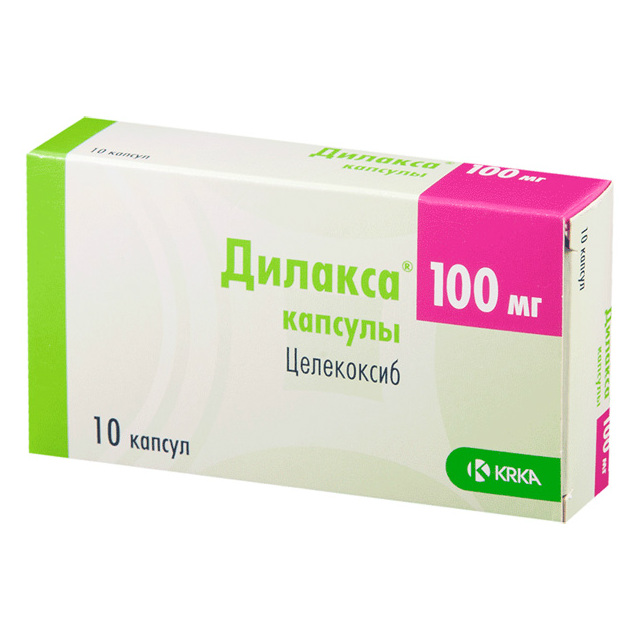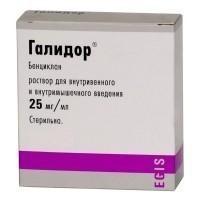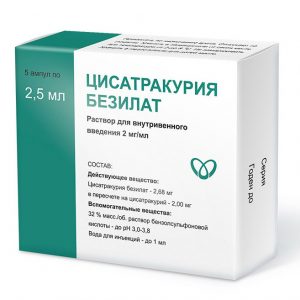Description
Pharmacological action
Pharmacotherapeutic group – NSAIDs (non-steroidal anti-inflammatory drug).
Pharmacodynamics
Celecoxib has anti-inflammatory, analgesic and antipyretic effects, blocking the formation of inflammatory prostaglandins (Pg) mainly due to the inhibition of cyclooxygenase-2 (COX-2). Induction of COX-2 occurs in response to inflammation and leads to the synthesis and accumulation of Pg, primarily PgE2, which causes an increase in the manifestations of inflammation (edema and pain). In therapeutic doses in humans, celecoxib does not significantly inhibit cyclooxygenase-1 (COX-1) and does not affect the concentrations of Pg that are synthesized as a result of COX-1 activation, as well as normal physiological processes associated with COX-1 and occurring in tissues primarily the stomach, intestines and platelets.
Effect on renal function
Celecoxib reduces kidney excretion of PgE2 and 6-keto-PgFl (a prostacyclin metabolite), but does not affect serum concentration of thromboxane B2 (TxB2) and kidney excretion of 11-dehydro-TxB2, thromboxane metabolite (both are COX-1 products).
Celecoxib does not cause a decrease in glomerular filtration rate in elderly patients and patients with chronic renal failure (CRF), transiently reduces sodium excretion. In patients with arthritis, the incidence of peripheral edema, arterial hypertension, and heart failure was comparable to that with the use of non-selective COX inhibitors that have inhibitory activity against COX-1 and COX-2. This effect was most pronounced in patients receiving diuretic therapy. However, there was no increase in the frequency of cases of increased blood pressure and the development of heart failure, and peripheral edema was mild and passed
on their own.
Pharmacokinetics
Absorption
When taken on an empty stomach, celecoxib is well absorbed, reaching a maximum plasma concentration (Cmax) after about 2-3 hours. The max in plasma after taking 200 mg of celecoxib is 705 ng / ml. The absolute bioavailability of celecoxib has not been studied. Cmax and the area under the concentration-time curve (AUC) are approximately proportional to the dose taken in the range of therapeutic doses up to 200 mg 2 times a day, when celecoxib is used in higher doses, the degree of increase in Cmax and AUC is less proportional.
Effect of food intake
Taking celecoxib along with fatty foods increases the time to reach Cmax by about 4 hours and increases absorption by about 20%.
Distribution of
The degree of binding to plasma proteins is not dependent on the concentration of celecoxib in blood plasma and is about 97%. Celecoxib does not bind to red blood cells. Celecoxib crosses the blood-brain barrier.
Metabolism
Celecoxib is metabolized mainly with the participation of the cytochrome P450 isoenzyme (CYP)
CYP2C9 in the liver by hydroxylation, oxidation and partial glucuronidation (see Interaction with other drugs). The resulting metabolites are pharmacologically inactive with respect to COX-1 and COG-2. The activity of the CYP2C9 isoenzyme is reduced in patients with genetic polymorphism, such as homozygous for the CYP2C9 * 3 isoenzyme polymorphism, which leads to a decrease in the efficiency of enzymes.
Excretion
Celecoxib is excreted through the intestines and kidneys in the form of metabolites (57% and 27%, respectively), less than 1% of the dose taken is unchanged. With repeated use, the half-life (T1 / 2) is 8-12 hours, and the clearance is about 500 ml / min. With repeated use, equilibrium plasma concentrations are reached by the 5th day of administration. The variability of the main pharmacokinetic parameters (AUC, Cmax, T1 / 2) is about 30%. The average volume of distribution in equilibrium is approximately 500 L / 70 kg in young healthy patients, indicating a wide distribution of celecoxib in the tissues.
Pharmacokinetics in individual patient groups
Elderly patients
Patients older than 65 years show an increase of 1.5-2 times the average values ​​of Cmax and AUS, which is largely due to a change in body weight, rather than age (in elderly patients, as a rule, lower average body weight is observed than in individuals of a younger age, due to which, ceteris paribus, higher concentrations of celecoxib are achieved) . For the same reason, older women usually have a higher plasma concentration of celecoxib than older men. The indicated pharmacokinetic features, as a rule, do not require dose adjustment. However, in elderly patients weighing less than 50 kg, treatment should be started with the minimum recommended dose.
Pasa
In representatives of the Negroid race, the AUC of celecoxib is approximately 40% higher than in representatives of the Caucasoid race. The causes and clinical significance of this fact are unknown. therefore, treatment of persons of the Negroid race is recommended to begin with the minimum recommended dose.
Impaired liver function
Celecoxib plasma concentrations in patients with mild hepatic insufficiency (class A according to the Child-Pugh classification) vary slightly. In patients with moderate liver failure (class B according to the Child-Pugh classification), the concentration of celecoxib in blood plasma can increase almost 2 times.
Impaired renal function
In elderly patients with a glomerular filtration rate (GFR)> 65 ml / min / 1.73 m2 associated with age-related changes, and in patients with a GFR of 35-60 ml / min / 1.73 m2 The pharmacokinetics of celecoxib does not change. There is no significant correlation between serum creatinine concentration (or creatinine clearance (CC)) and celecoxib clearance. It is assumed that the presence of severe renal failure does not affect the clearance of celecoxib, since the main route of its excretion is the conversion of inactive metabolites in the liver.
Indications
Symptomatic treatment of osteoarthritis, rheumatoid arthritis and ankylosing spondylitis
Pain (back pain, musculoskeletal, postoperative and other types of pain)
Treatment of primary dysmenorrhea.
Contraindications
Hypersensitivity to celecoxib or any other component of the
drug Hypersensitivity to other sulfonamide derivatives
Complete or incomplete combination of bronchial asthma, recurrent nasal polyposis and paranasal sinuses and other intolerance to acetyl-2 or acetyl intolerance .h. history)
Period after coronary artery bypass grafting
Active erosive and ulcerative lesions of the gastric or duodenal mucosa, gastric ulcer and duodenal ulcer in the acute stage or gastrointestinal bleeding
Inflammatory bowel disease exacerbations of
Heart failure (NYHA class II – IV functional class)
Clinically confirmed coronary heart disease, peripheral disease FIR artery and cerebrovascular disease in a pronounced stage
Hemorrhagic stroke
Subarachnoid hemorrhage
Pregnancy
breastfeeding period (see. “Pregnancy and lactation”)
Severe liver failure (Child-Pugh class C) (no experience)
Severe renal failure (creatinine Cl less than 30 ml / min), progressive kidney disease, confirmed hyperkalemia (no experience application)
Age up to 18 years (no experience of use)
Lactose intolerance, lactase deficiency or glucose-galactose malabsorption syndrome (Dilax® preparation contains lactose).
Precautions:
Gastrointestinal diseases (gastric or duodenal ulcer, ulcerative colitis, Crohn’s disease, history of bleeding)
Presence of Helicobacter pylori
infection Concomitant use with digoxin, anticoagulants (e.g. warfinalgid, e.g. , after surgery)
Diseases of CVD
Arterial hypertension
Cerebrovascular diseases
Dyslipidemia / hyperlipidemia
Diabetes mellitus
Diseases of the peripheral arteries
Long-term use NSAIDs
Disease with severe body)
Smoking
Tuberculosis
Alcoholism.
Use during pregnancy and lactation
There are insufficient data on the use of celecoxib in pregnant women. The potential risk of using Dilax® during pregnancy has not been established, but it cannot be ruled out.
In accordance with the mechanism of action, when applying NSAIDs, including celecoxib, some women may develop changes in the ovaries, which can cause complications during pregnancy or impaired fertility. Women who are planning a pregnancy or are being examined for infertility should consider discontinuing NSAIDs, including celecoxib.
celecoxib, belonging to the group of inhibitors of GHG synthesis, when taken during pregnancy, especially in the III trimester, can cause weakness of uterine contractions and premature closure of the ductus arteriosus. The use of inhibitors of GHG synthesis in early pregnancy can adversely affect the course of pregnancy.
There is limited evidence for the excretion of celecoxib with breast milk. Studies have shown that celecoxib is excreted in breast milk in very low concentrations. Nevertheless, taking into account the potential possibility of side effects from celecoxib in a nursing baby, the advisability of canceling either breastfeeding or taking celecoxib should be assessed, given the importance of taking Dilax® for the mother.
Composition
Active ingredient:
Celecoxib granule substance – 132.975 mg (active ingredient of granule substance – celecoxib – 100 mg).
Excipients of granule substance: lactose monohydrate – 24, 875 mg sodium lauryl sulfate – 4.05 mg povidone K30 – 3.375 mg croscarmellose sodium – 0.675 mg.
Excipients: croscarmellose sodium – 0.675 mg magnesium stearate – 1.35 mg.
Hard gelatin capsules No. 3:
Shell: titanium dioxide (E171) – 2% gelatin – up to 100%.
Cap: titanium dioxide (E171) – 2% gelatin – up to 100%.
Dosage and administration
Inside, without chewing, drinking with water, regardless of food intake.
Since the risk of cardiovascular complications may increase with increasing dose and duration of DilaxВ®, the minimum effective dose should be taken with the shortest possible course. The maximum recommended daily dose for long-term use is 400 mg.
Symptomatic treatment of osteoarthrosis. The recommended dose is 200 mg / day in 1 or 2 doses.
Symptomatic treatment of rheumatoid arthritis. The recommended dose is 100 or 200 mg 2 times a day.
Symptomatic treatment of ankylosing spondylitis. The recommended dose is 200 mg / day in 1 or 2 doses. In some patients, the effectiveness of 400 mg 2 times a day was noted.
Treatment of pain and primary dysmenorrhea. The recommended initial dose is 400 mg, followed by, if necessary, taking an additional dose of 200 mg on the first day. In the following days, the recommended dose is 200 mg 2 times a day, as needed.
Elderly patients. Usually, dose adjustment is not required. However, in patients weighing less than 50 kg, treatment is best started with the minimum recommended dose.
Impaired liver function. In patients with mild severity of liver failure (Child-Pugh class A classification), dose adjustment is not required. In the case of moderate liver failure (class B according to the Child-Pugh classification), the initial recommended dose of the drug should be reduced by half. There is no experience with the use of DilaxВ® in patients with severe liver failure (class C according to the Child-Pugh classification) (see “Contraindications”).
Impaired renal function. In patients with mild to moderate renal failure, dose adjustment is not required. There is no experience with the use of DilaxВ® in patients with severe renal failure (see “Special Instructions”, “Contraindications”).
Concomitant use with fluconazole. With the simultaneous use of fluconazole (an inhibitor of the isoenzyme CYP2C9) and the drug DilaxВ®, the initial recommended dose should be reduced by half. Caution should be exercised while using with other inhibitors of the isoenzyme CYP2C9.
Slow substrate metabolism of the CYP2C9 isoenzyme. In patients who are slow metabolizers or with a suspicion of such a condition, DilaxВ® should be used with caution, because this can lead to the accumulation of celecoxib in high plasma concentrations. In such patients, the initial recommended dose should be reduced by 2 times.
Side effects
Classification of the incidence of side effects. WHO: very often -? 1/10 often – from? 1/100 to <1/10 infrequently - from? 1/1000 to <1/100 rarely - from? 1/10000 to <1/1000 is very rare - from <1/10000. From the CCC side: often – peripheral edema, increased blood pressure, including worsening of the course of arterial hypertension infrequently – hot flashes, palpitations rarely – CHF, arrhythmia, tachycardia, ischemic stroke and myocardial infarction. From the digestive system: often – abdominal pain, diarrhea, dyspepsia, flatulence, vomiting infrequently – dental diseases (post-extraction hole alveolitis) rarely – stomach ulcer and duodenal ulcer, ulceration of the esophagus very rarely – intestinal perforation, pancreatitis. From the nervous system: often – dizziness, insomnia infrequently – anxiety, increased muscle tone, drowsiness rarely – confusion (psychosis). From the urinary system: often – urinary tract infection. From the respiratory system: often – bronchitis, cough, sinusitis, upper respiratory tract infections infrequently – pharyngitis, rhinitis. From the skin: often – itchy skin (including generalized), skin rash infrequently – urticaria, ecchymosis rarely – alopecia. From the hemopoietic organs: infrequently – anemia rarely – thrombocytopenia. From the senses: infrequently – tinnitus, blurred visual perception. Laboratory indicators: infrequently – increased activity of liver enzymes (including ALT and AST). Allergic reactions: rarely – angioedema is very rare – bullous rashes (bullous dermatitis). Other: infrequently – exacerbation of allergic diseases (hypersensitivity), flu-like syndrome, accidental injuries, facial edema. According to post-marketing observation: Allergic reactions: very rarely – anaphylaxis (anaphylactic reactions). From the nervous system: rarely – hallucinations are very rare – hemorrhage in the brain, aseptic meningitis, loss of taste, loss of smell. From the sensory organs: infrequently – conjunctivitis. From the CCC: rarely – pulmonary embolism is very rare – vasculitis. From the digestive system: rarely – gastrointestinal bleeding, hepatitis very rarely – liver failure, fulminant hepatitis, liver necrosis, cholestasis, cholestatic hepatitis, jaundice. From the skin: rarely – photosensitivity reactions very rarely – Stevens-Johnson syndrome, erythema multiforme, toxic epidermal necrolysis, drug rash in combination with eosinophilia and systemic symptoms (DRESS or hypersensitivity syndrome), acute generalized exanthematous pustulosis, exfoliative dermatitis. From the urinary system: rarely – acute renal failure, hyponatremia very rarely – interstitial nephritis, nephrotic syndrome, minimal impaired renal function. On the part of the reproductive system: rarely – menstrual irregularity frequency is unknown – decreased fertility in women *. Other: infrequently – chest pain. * Women planning a pregnancy were excluded from the study, so they were not taken into account when calculating the frequency of occurrence. Drug Interactions In vitro studies have shown that celecoxib, although not a substrate of the CYP2D6 isoenzyme, inhibits its activity. Therefore, there is a likelihood of drug interaction in vivo with drugs whose metabolism is associated with the CYP2D6 isoenzyme. Warfarin and other anticoagulants: with simultaneous use, prolongation of PV is possible. Fluconazole, ketoconazole: with the simultaneous use of 200 mg of fluconazole 1 time per day, a 2-fold increase in the concentration of celecoxib in blood plasma is observed, which is associated with inhibition of the metabolism of celecoxib fluconazole through the isoenzyme CYP2C9. Patients taking fluconazole (an inhibitor of the CYP2C9 isoenzyme) should halve the recommended dose of celecoxib (see “Dosage and Administration”). Ketoconazole (an inhibitor of the CYP3A4 isoenzyme) does not have a clinically significant effect on celecoxib metabolism. Dextromethorphan and metoprolol: it was found that the simultaneous use of celecoxib at a dose of 200 mg per day led to an increase in the concentrations of dextromethorphan and metoprolol (substrates of the isoenzyme CYP2D6) 2.6 and 1.5 times, respectively. Such an increase in concentrations is associated with inhibition of the metabolism of substrates of the isoenzyme CYP2D6 celecoxib by inhibiting the activity of the isoenzyme CYP2D6 itself. Methotrexate: No clinically significant pharmacokinetic interactions between celecoxib and methotrexate have been observed. antihypertensive drugs, including ACE inhibitors / antagonists of ARA II, diuretics and beta-blockers: inhibition of GHG synthesis can reduce the antihypertensive effect, including ACE / ARA II inhibitors, diuretics and beta-blockers. This interaction should be considered with the simultaneous use of celecoxib with ACE / ARA II inhibitors, diuretics and beta-blockers. However, there was no significant pharmacodynamic interaction with lisinopril with respect to the effect on blood pressure. In elderly patients, in patients with dehydration (including patients receiving diuretic therapy) or in patients with impaired renal function, the simultaneous use of NSAIDs, including selective COX-2 inhibitors, with ACE inhibitors, ARA II can lead to impaired renal function, including possible acute renal failure. Typically, these effects are reversible. In this regard, caution should be exercised while using these drugs. In such cases, it is advisable to first rehydrate and then start therapy with Dilax®. In addition, the possibility of monitoring renal function at the beginning of therapy and periodically during the simultaneous use of drugs should be considered. Cyclosporine: Given that NSAIDs have an effect on renal synthesis of GHGs, they may increase the risk of nephrotoxicity when used simultaneously with cyclosporine. Diuretics: NSAIDs in some patients may reduce the natriuretic effect of furosemide and thiazides by reducing renal synthesis of PG. This must be considered when using celecoxib. Contraceptives for oral administration: celecoxib does not have a clinically significant effect on the pharmacokinetics of a combined contraceptive (1 mg norethisterone / 35 μg ethinyl estradiol). Lithium: with the simultaneous use of lithium salts at a dose of 450 mg 2 times a day and celecoxib at a dose of 200 mg 2 times a day, an increase in lithium concentration in blood plasma by about 17% was noted. Patients taking lithium preparations should be closely monitored while using or discontinuing celecoxib. Other NSAIDs: the simultaneous use of celecoxib and other NSAIDs (not containing acetylsalicylic acid) should be avoided (the risk of side effects increases). Other drugs: There were no clinically significant interactions between celecoxib and antacids (magnesium / aluminum hydroxide), omeprazole, glibenclamide, phenytoin, or tolbutamide. Celecoxib does not affect the antiplatelet effect of acetylsalicylic acid in low doses. Celecoxib does not have an antiplatelet effect on platelets, so they should not replace acetylsalicylic acid in order to prevent cardiovascular diseases. In healthy volunteers, NSAIDs do not affect the pharmacokinetics of digoxin. Nevertheless, with the simultaneous use of digoxin and indomethacin and ibuprofen in patients, an increase in the concentration of digoxin in the blood plasma was noted. This must be taken into account while using with other drugs that increase the concentration of digoxin in blood plasma. There is no information on the interaction of celecoxib and digoxin. Given the other effects of celecoxib on CVS, it should be taken with caution at the same time as digoxin. In this case, it is recommended to carefully monitor adverse reactions. Celecoxib is predominantly metabolized in the liver by the CYP2C9 isoenzyme. Since barbiturates are inducers of the CYP2C9 isoenzyme, a simultaneous use with celecoxib may cause a decrease in the concentration of the latter in blood plasma. Overdose Clinical data on overdose are limited. A single dose of up to 1200 mg and repeated use of up to 1200 mg 2 times a day was not accompanied by clinically significant side effects. Treatment: If an overdose is suspected, supportive therapy is necessary. Dialysis is supposedly not effective, as the relationship of celecoxib with plasma proteins is high (97%). active substance celecoxib Terms and conditions prescription Lekarstvennaja form kapsul




